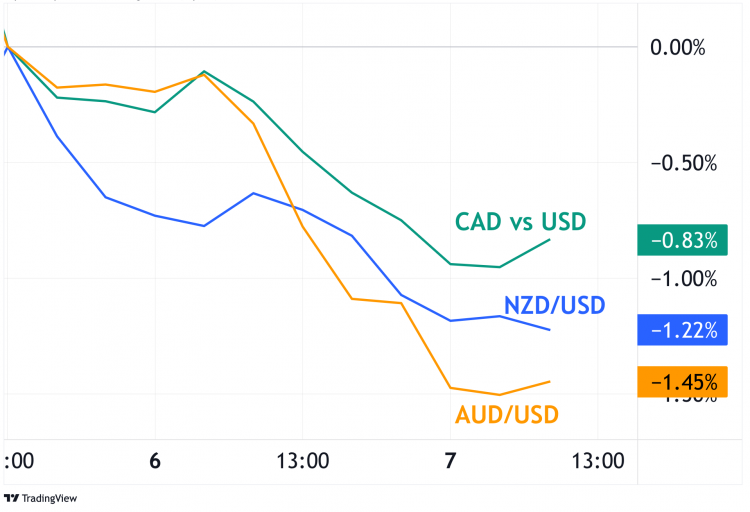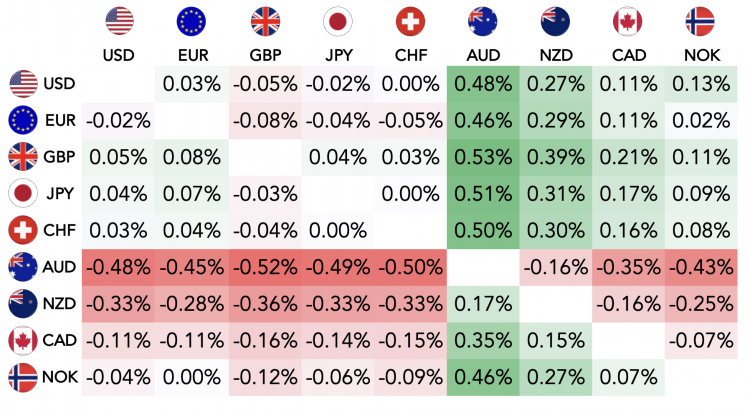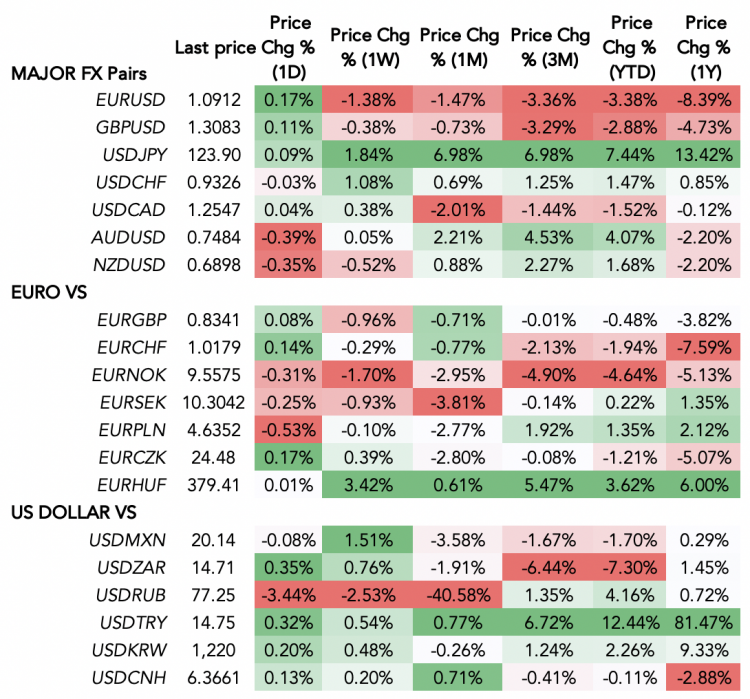The euro, Australian and New Zealand dollars take a slap in the face as Fed minutes reveal long-awaited asset reduction program – Photo: Shutters

Forex markets are seeing a fresh wave of flight to the US dollar, with risk-sensitive currencies including the Australian dollar (AUD), New Zealand dollar (NZD), Euro (EUR), and Canadian dollar (CAD) taking a knock following the release of the Federal Reserve (Fed) minutes.
Fed members advocated unwinding the Fed’s balance sheet at a maximum monthly pace of $95bn per month, about double the rate at which the Fed previously cut its balance between 2017 and 2019. Minutes also revealed that ‘many’ officials would have wanted to boost rates by 50 basis points in March, implying that stronger rate hikes are in the pipeline in May and June.
It’s a clear hawkish message from the Fed, which is determined to combat the greatest inflation in more than four decades. The dollar continues to benefit from rising rate expectations and Treasury yields, with the US dollar index (DXY) reaching fresh highs of 99.60, the highest level since May 2020.
The EUR/USD pair has been in the red for 5 consecutive sessions and has broken through the 1.09 barrier again this morning, owing to the growing monetary divergences between the Fed and a European Central Bank that is still caught in the pit.
EUR/USD pair breaks below 1.09 mark
The Ukrainian conflict continues in the forefront, negotiations have stagnated, and sanctions against Russia are escalating. The United States imposed fresh sanctions on two of Russia’s largest banks as well as President Vladimir Putin’s adult daughters. The EU has banned coal imports from Russia and will have a meeting next week to tackle the problematic oil and gas imports.
Risk-off sentiment and increased worries of a Chinese economic slump due to the Covid-19 lockdowns have resulted in sharper pullbacks in the Australian and New Zealand dollars versus the USD.
Oil prices are also trending down, owing to concerns about Chinese demand, new waves of Covid-19, and increasing interest rates in the United States. WTI fell to 96 dollars per barrel, while Brent fell to 101 dollars per barrel. The Canadian dollar (CAD), a common oil proxy, plummeted by 0.5% yesterday and is still weak today.
What is your sentiment on USD/JPY?
Vote to see Traders sentiment!
Several Fed speakers are scheduled to speak today, so traders should keep a watch on the headlines that will be issued in the European afternoon hours. At 13:00 GMT, St Louis Fed President James Bullard, the Fed’s most hawkish member, will talk at an event organised by the University of Missouri.
Chart of the day: AUD, NZD & CAD hit by worsening risk sentiment
 AUD, CAD, NZD vs USD price action following FOMC minutes – Credit: Capital.com / Source: Tradingview
AUD, CAD, NZD vs USD price action following FOMC minutes – Credit: Capital.com / Source: TradingviewForex markets today – 7 April 2022
- In London’s morning trade, the US Dollar Index (DXY) traded at 99.60, unchanged on the day after five straight sessions of gains.
- The euro (EUR) traded slightly below $1.09, flat on the day. The British pound (GBP) edged marginally up by 0.1% to $1.308.
- Low-yielding safe-haven currencies, such as the Japanese yen (JPY) and the Swiss franc (CHF), are unchanged after falling yesterday amid higher US Treasury yields.
- Oil-linked currencies are slightly weaker, with the Canadian dollar (CAD) and the Norwegian krone (NOK) both edging 0.2% down against the USD.
- The commodity-linked Australian dollar (AUD) is the big underperformer among G-10 currencies, slipping 0.5% after losing as much as 0.9% yesterday. The New Zealand dollar (NZD) is down by 0.3%.
- Among Central Eastern European (CEE) currencies, the Polish zloty (PLN) stands out, gaining 0.3% vs the EUR, after the National Bank of Poland increased interest rates by 100 basis points yesterday. The Hungarian forint (HUF) weakened 0.2% today, after losing 0.9% yesterday. The Czech koruna (CZK) slipped by 0.3% this morning.
- Emerging market (EM) currencies were mostly lower amid worsening risk sentiment. The astonishing strengthening of the Russian rouble (RUB) continues, with the USD/RUB exchange rate falling below the 80 mark wall. The South African rand (ZAR) edged 0.2% lower, as well as the Korean won (KRW) – losing 0.6% yesterday. The Turkish lira (TRY) is down 0.3%, while the Chinese yuan (CNH) is mostly flat. The Mexican peso (MXN) gained 0.2%.
Major currencies: Top risers and fallers today – 7 April 2022
 Major currencies: Today’s top risers and fallers, 7 April 2022, 11:30 UTC – Credit: Capital.com
Major currencies: Today’s top risers and fallers, 7 April 2022, 11:30 UTC – Credit: Capital.comForex market heatmap – 7 April 2022
 Forex market heatmap as of 7 April 2022, 13:00 UTC – Credit: Capital.com
Forex market heatmap as of 7 April 2022, 13:00 UTC – Credit: Capital.comRead more
capital.com
